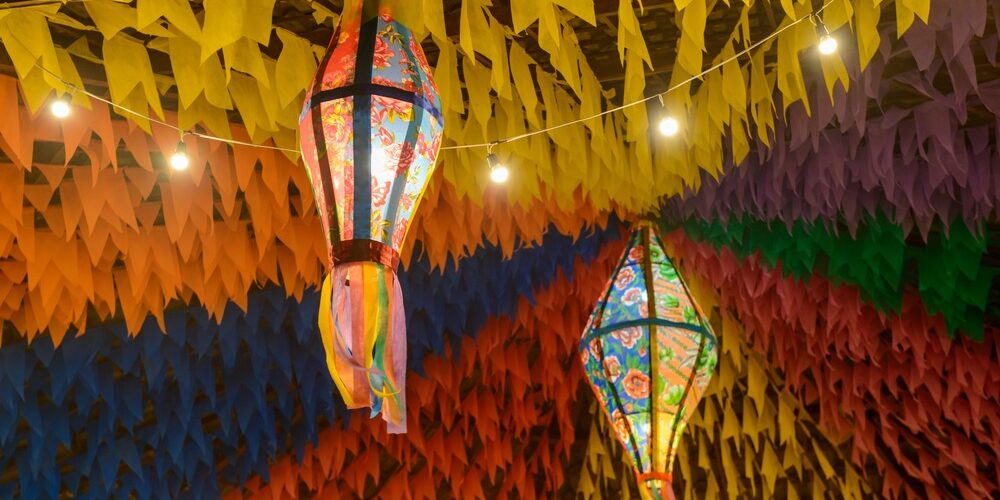Carnival Celebrations Around the World: A Global Festival of Joy
Carnival celebrations are some of the most colorful, exhilarating, and culturally rich events held around the world. These festive gatherings are often marked by music, dancing, parades, elaborate costumes, and a shared sense of joy and unity. The history of carnival varies from region to region, with each celebration taking on a unique character influenced by local customs, traditions, and cultural heritage. Here’s a detailed exploration of some of the world’s most iconic carnival celebrations, each offering a distinct experience that reflects the spirit of its community.
Brazilian Carnival – Rio de Janeiro
One of the largest and most famous carnival celebrations in the world takes place in Brazil, particularly in Rio de Janeiro. The Brazilian Carnival, held annually in February or March, is a massive event that draws millions of visitors from around the globe. The heart of the celebration is the Samba Parade, where samba schools compete in the Sambadrome, a venue specially built for the parade. This vibrant event features groups of dancers, drummers, and musicians wearing intricate, often flamboyant costumes. Samba, the traditional Brazilian dance, forms the core of the carnival, with performances that embody the energy and rhythm of Brazil’s cultural heritage. The parade is a true feast for the eyes, with floats that are elaborately designed to reflect themes drawn from both contemporary and historical topics.
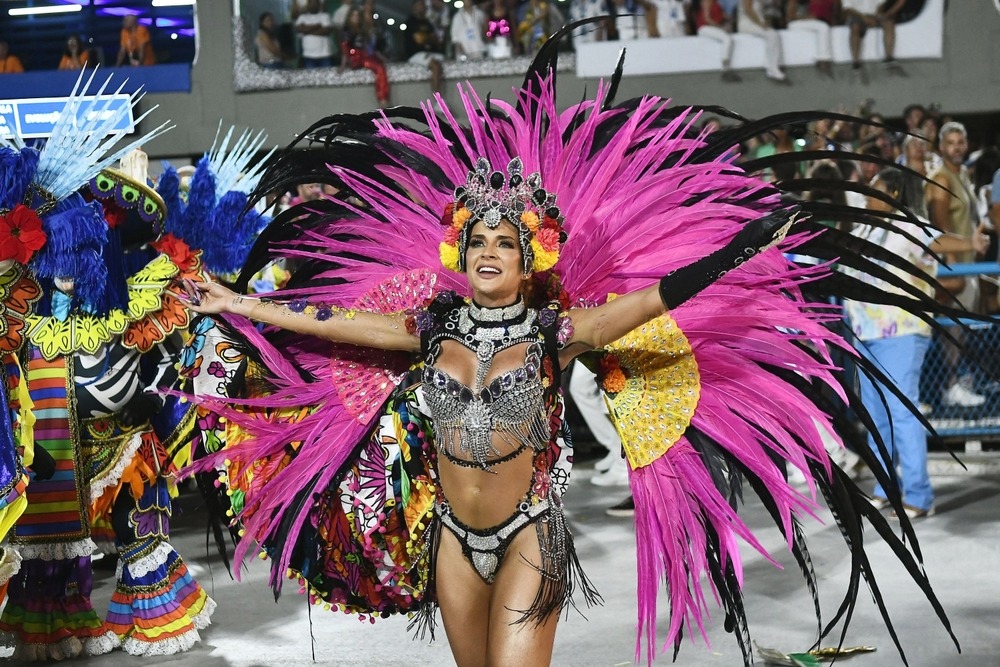
The history of the Rio Carnival dates back to the 18th century, originally stemming from European influences such as masquerades and public celebrations before Lent. Over time, the festival evolved into a celebration of African and indigenous Brazilian cultural expressions, with music, dance, and costumes reflecting the country’s diversity. The modern Brazilian Carnival, particularly in Rio, is now recognized as a cultural symbol of Brazil and a major tourist attraction. Beyond the Sambadrome, the streets of Rio de Janeiro come alive with street parties known as “blocos,” where locals and visitors alike dance, drink, and celebrate together in a spontaneous and inclusive atmosphere. The Rio Carnival is a showcase of Brazilian spirit, combining passion, tradition, and a deep sense of community.
Mardi Gras – New Orleans, USA
Mardi Gras in New Orleans is one of the most iconic carnival celebrations in the United States, drawing crowds from around the world every year. The event typically takes place in late February or early March, culminating on Fat Tuesday, the day before Ash Wednesday, marking the beginning of Lent in the Christian calendar. Mardi Gras in New Orleans is famous for its grand parades, elaborate costumes, and bead-throwing traditions. The parades are led by “krewes,” which are private organizations that organize floats, balls, and other festivities. Each krewe has its own theme for the year, often referencing mythology, history, or pop culture, which is reflected in their costumes and float designs. The festivities are filled with music, especially jazz, and the streets of New Orleans are alive with revelry, especially along the French Quarter, where parties spill into every corner.
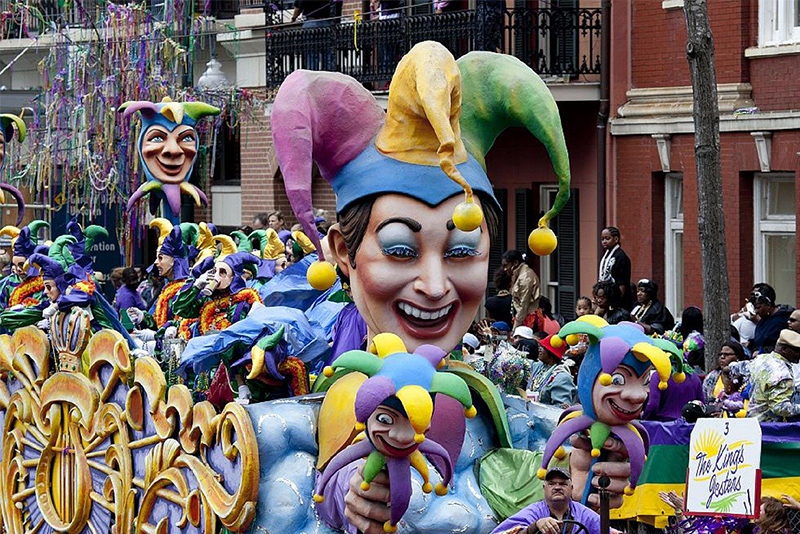
The origins of Mardi Gras in New Orleans date back to 1699 when French explorers brought the tradition of celebrating the day before Lent to the area. It wasn’t until the 19th century, however, that Mardi Gras took on the form it has today. The tradition of “krewe” parades began in the early 1800s, with the first official New Orleans Mardi Gras parade taking place in 1857. Mardi Gras was initially a more formal affair, with upper-class society hosting balls and masquerades, but over time it grew into a more inclusive celebration with street parades, music, and a sense of public participation. In addition to the parades, the “King Cake” is an essential part of Mardi Gras tradition. This colorful cake, often filled with sweet fillings, has a small figurine hidden inside. Whoever finds the figurine is said to have good luck, but also must host the next King Cake party. Mardi Gras is as much about the food, music, and sense of community as it is about the spectacle of the parades.
Carnival of Venice – Italy
The Carnival of Venice is one of Europe’s most storied and refined carnival celebrations, known for its elaborate masks and centuries-old traditions. Held annually in the lead-up to Lent, this carnival is a striking contrast to the loud, exuberant celebrations seen elsewhere. The most iconic feature of the Venice Carnival is its masquerade balls and the use of intricate masks, a tradition that dates back to 12th century Italy. These masks were once worn to allow people to move freely through society without revealing their identity, and today, they are a symbol of the city’s rich cultural and artistic history. During the carnival, the streets and canals of Venice come alive with processions of masked revelers, some of whom participate in grand balls, while others simply wander the city in costume. One of the most notable events is the “Volo dell’Angelo” or the “Flight of the Angel,” where a person dressed as an angel glides down a rope from the top of St. Mark’s Campanile to the square below, symbolizing the opening of the carnival.
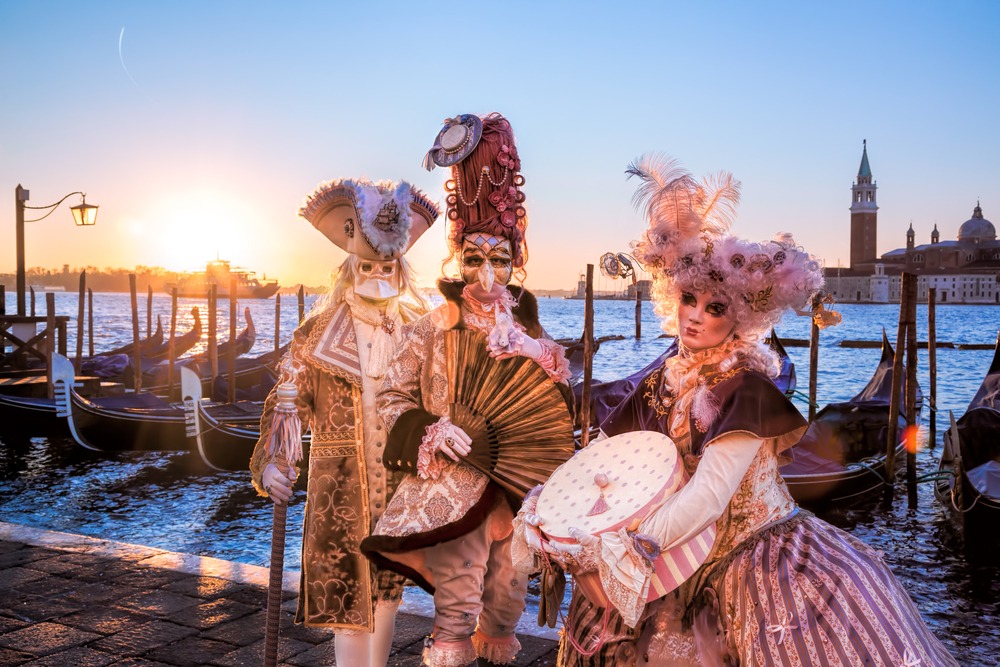
The Carnival of Venice dates back to the 11th century, although it became especially prominent in the 18th century when Venice was a major center for art, culture, and fashion in Europe. It was during this time that the use of masks became an essential part of the festival, with Venetians using them to conceal their identities and engage in more liberating and sometimes mischievous activities. After a period of decline in the 19th century, the carnival was revived in the 1970s, and it has since grown into an international event that attracts thousands of visitors each year. The Carnival of Venice is unique for its elegance, steeped in the tradition of Venetian aristocracy, and is as much about the city’s architectural beauty and history as it is about the festival itself. Visitors often partake in tours of Venice’s grand palaces and opera houses during the carnival, enjoying classical music performances that echo the city’s artistic heritage.
Apokries – Greece
Apokries, the Greek Carnival, is a vibrant and deeply rooted celebration that precedes the beginning of Lent in the Orthodox Christian calendar. The term “Apokries” translates to “away from meat,” symbolizing the start of the fasting period. This carnival season typically spans three weeks, culminating in the spectacular celebrations on the weekend before Clean Monday (Kathara Deftera). Apokries is characterized by lively parades, traditional dances, music, and costume parties held throughout Greece. Each region brings its own unique flavor to the festivities, blending ancient pagan rituals with Christian traditions. In cities like Patras, the celebration reaches its zenith with one of Europe’s largest carnivals, featuring massive floats, elaborate costumes, and fireworks. Smaller towns often host folk performances and reenactments of ancient rituals, reflecting Greece’s rich cultural heritage.

The history of Apokries can be traced back to the ancient Greek festival of Dionysia, dedicated to Dionysus, the god of wine, revelry, and fertility. These pre-Christian festivals were marked by feasting, drinking, and theatrical performances. When Christianity spread, many of these traditions were incorporated into the Orthodox calendar. Today, Apokries serves as a time for Greeks to indulge in merriment before the spiritual reflection of Lent. A key aspect of the celebration is the symbolic “burning of the King Carnival” at the end of the festivities, marking the conclusion of indulgence and the transition to fasting. Traditional foods, such as loukoumades (honey-soaked doughnuts) and karnavali sweets, are enjoyed in abundance, adding a gastronomic delight to the colorful celebrations.
Fašiangy – Slovakia
Fašiangy is Slovakia’s vibrant and folk-centered carnival celebration, marking the days between Epiphany and Ash Wednesday. Rooted in pagan and Christian traditions, Fašiangy is a joyous time of feasting, music, and elaborate masquerades. Villages and towns across Slovakia come alive with parades featuring people dressed in traditional costumes and masks, often depicting humorous or grotesque characters. Folk music and dances accompany these processions, creating a lively and festive atmosphere. One of the highlights of Fašiangy is the symbolic farewell to winter, where figures representing the season are burned or buried to welcome spring. The festivities culminate on Shrove Tuesday, just before the fasting period of Lent begins, with a dramatic “burying of the bass,” a mock funeral symbolizing the end of indulgence.
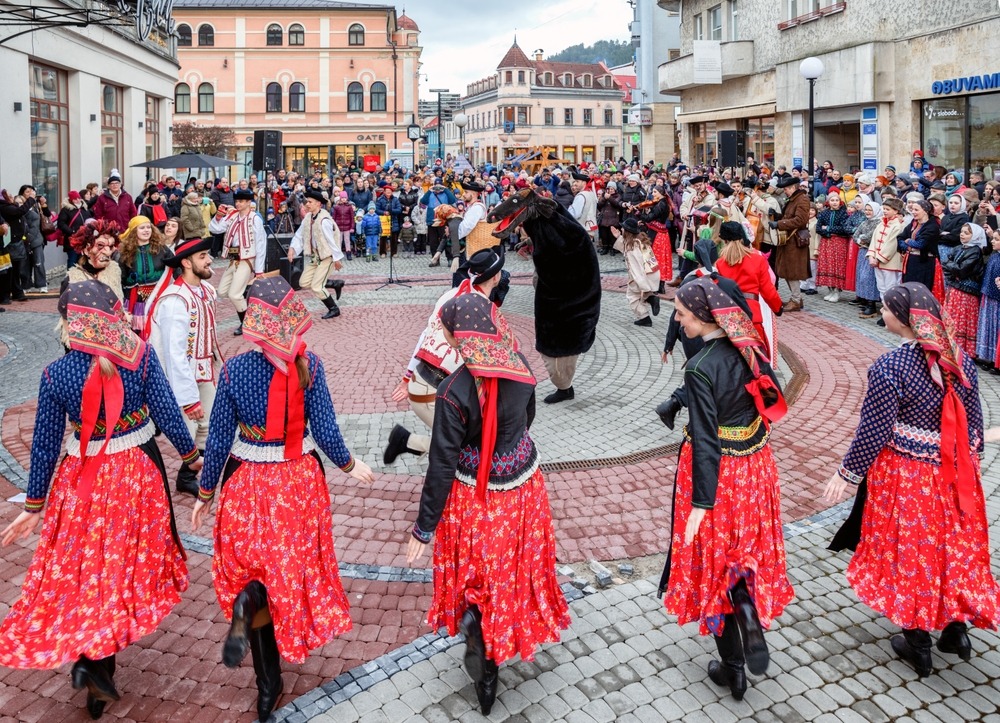
The history of Fašiangy is deeply rooted in Slovak folklore and agricultural traditions. Originally, it was a celebration to mark the end of winter and the start of the new agricultural cycle. Pagan rituals intended to ensure fertility and good harvests were gradually merged with Christian customs, creating the modern Fašiangy festivities. Today, these celebrations are a blend of humor, tradition, and community spirit, with many villages hosting reenactments of historical customs. Food plays a central role during Fašiangy, with traditional Slovak dishes such as doughnuts (šišky), fried pancakes, and hearty pork feasts served in abundance. The mix of folklore, culinary delights, and vibrant community activities makes Fašiangy a unique and cherished celebration in Slovakia.
Carnival of Nice – France
The Carnival of Nice, held on the French Riviera, is one of the largest and most famous carnival celebrations in Europe. Taking place each year in February, the carnival is a colorful and lively affair, featuring large parades, music, dancing, and stunning floral displays. One of the most iconic elements of the Carnival of Nice is the “Bataille de Fleurs” or “Battle of Flowers,” where elaborate floats decorated with flowers parade through the streets while spectators throw flowers back at the floats. The carnival’s theme changes each year, and the floats are meticulously designed to reflect these themes, which can range from political satire to fairy-tale inspired designs. The streets of Nice come alive with music, street performances, and revelers dressed in costumes, creating an inclusive and joyful atmosphere for everyone, from families to tourists.
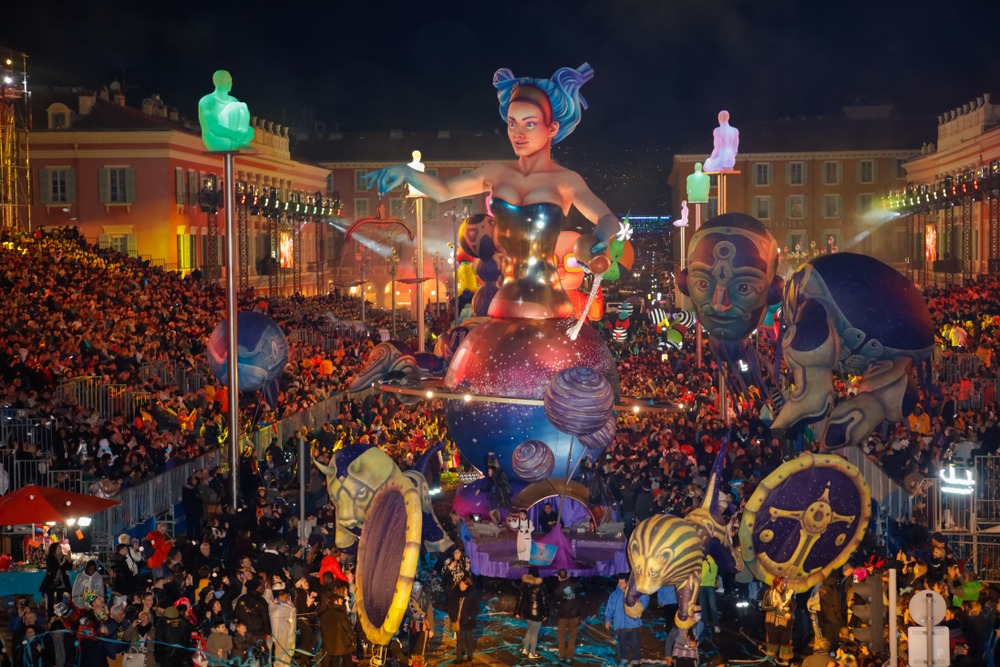
The origins of the Carnival of Nice date back to the 13th century, but it wasn’t until the 19th century that it became a more formalized event. During this time, the first organized parades began to take shape, and the tradition of decorating floats with flowers became a central part of the festival. The carnival was initially a local event but gradually grew to attract visitors from around the world, especially during the 20th century. Today, the Carnival of Nice is one of France’s premier events, drawing hundreds of thousands of visitors each year. What makes this carnival especially unique is the stunning backdrop of the Mediterranean coast, with the city of Nice serving as a picturesque setting for the floats and celebrations. The lively nature of the event, combined with the Riviera’s glamorous ambiance, makes the Carnival of Nice a perfect blend of festivity and sophistication.
Carnival of Binche – Belgium
The Carnival of Binche is a UNESCO-recognized festival held annually in the town of Binche in Belgium. It is one of the oldest and most traditional carnival celebrations in Europe, with origins dating back to the 14th century. The highlight of this carnival is the “Gilles” – men dressed in elaborate costumes, with masks and large feathers, who parade through the streets and throw oranges into the crowd as a symbol of good luck. The tradition of the Gilles is one of the most unique aspects of the Binche Carnival and has remained largely unchanged for centuries. The costumes worn by the Gilles are made by hand and are passed down through generations, making each costume a family heirloom. The carnival is celebrated with music, dancing, and various processions, and it is deeply rooted in the cultural and religious history of the region.
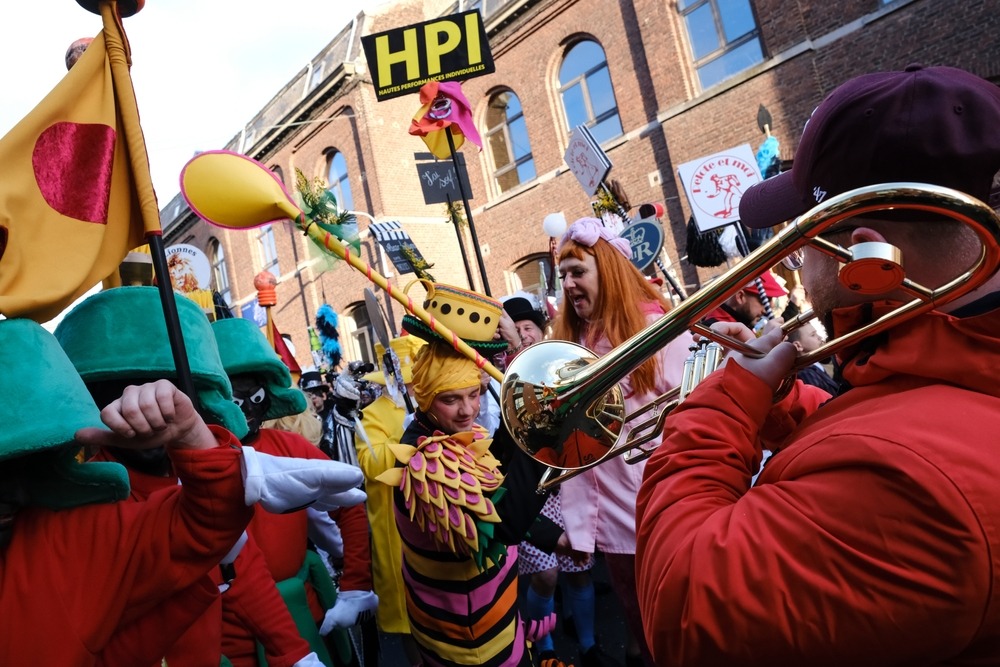
The Carnival of Binche’s history is steeped in local tradition and Catholic rituals, with many of the festivities originally serving as a way for the townspeople to prepare for the solemnity of Lent. The Gilles were originally seen as symbols of fertility, and their presence during the carnival was meant to usher in the coming spring. Over the centuries, the festival has evolved, but the central figure of the Gilles has remained constant, and their participation is still seen as a great honor within the local community. Today, the Carnival of Binche is a major cultural event, attracting both locals and international visitors. The unique combination of history, tradition, and the distinct role of the Gilles makes this carnival one of the most fascinating and authentic in Europe.
Carnivals across the world are a vivid reflection of the diverse cultures that celebrate them. Whether it’s the grand parades of Brazil, the elegance of Venice, or the lively street parties of New Orleans, each carnival offers a unique glimpse into the history, customs, and communal spirit of its locale. These celebrations not only mark the beginning of Lent but also serve as an important cultural moment, uniting people in joyous revelry and providing an opportunity to showcase rich traditions that have been passed down through generations. From masks to music, from floats to flowers, carnival celebrations are an unmissable experience for anyone looking to immerse themselves in the vibrancy of global cultures.


